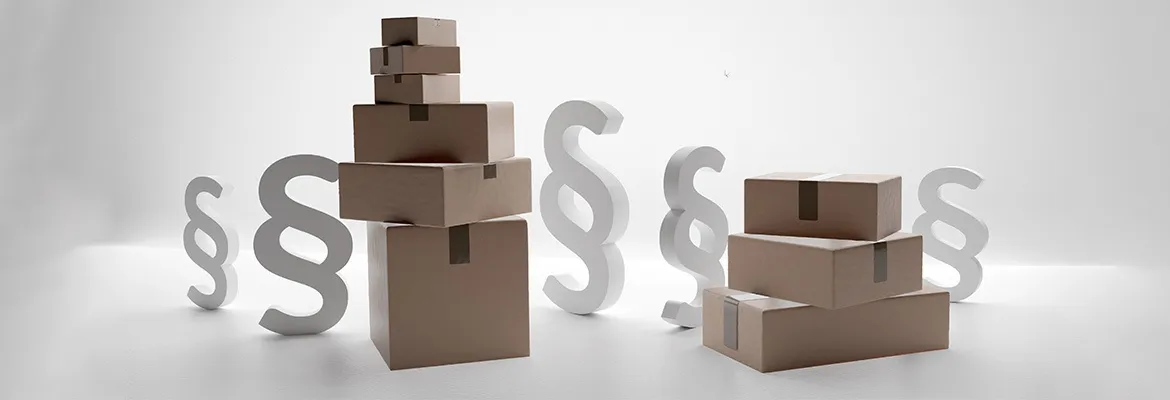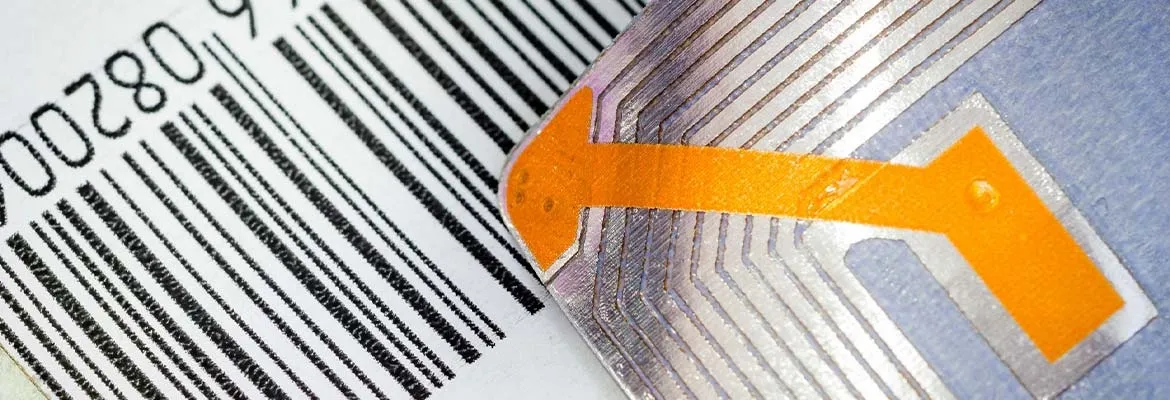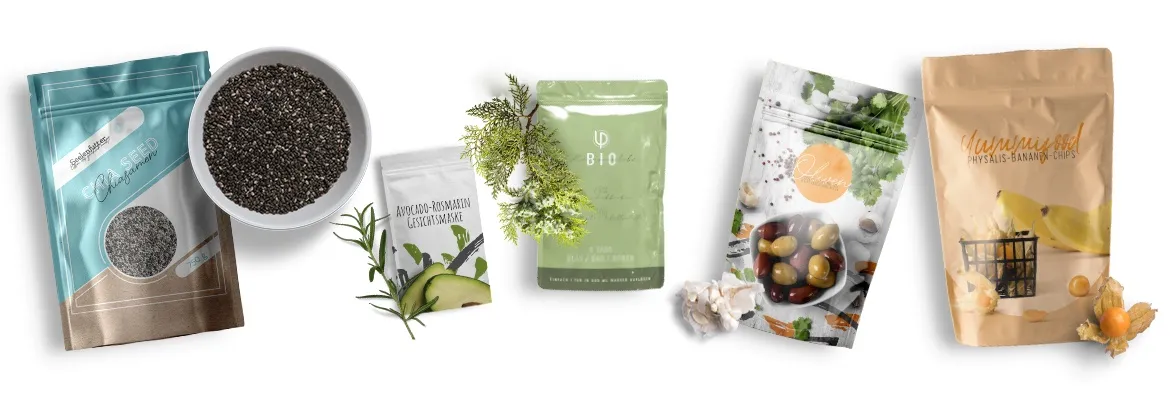
Quotas for the circular economy: EU targets for better recycling
- At the latest since the EU's circular economy package, means have been sought to improve recycling - especially of plastics - throughout Europe.
- The higher recycling quotas have already been taken into account in German legislation, and from 2022 they will be even stricter - the quota for plastic packaging will then be 63 per cent.
- The legislative reforms are also intended to support the use of recyclates. Recycled secondary raw materials play an important role in the circular economy, but their potential is not nearly exhausted.
- Therefore, the EU circular economy package is to be expanded to include binding quotas for the use of recycled materials.
The topic of circular economy is by no means new in the EU. Quite the opposite: the EU Commission's circular economy package was already adopted in 2018, after three years of discussions on the content of the proposals. Now, according to the will of the European Parliament, a tightening of waste regulations is on the agenda. Among other things, this is intended to improve the market opportunities for recycled materials. But it is not least about increasing the share of recycled materials - for example in the manufacture of plastic products.
With its circular economy package, the EU had aimed for nothing less than an international pioneering role. Less waste, better recycling, clear recycling quotas: This should succeed in significantly reducing waste generation in the member states.
New regulations for better waste management
A global pioneering role should be secured by the regulations from the EU's Circular Economy Package of 2015. Avoid waste wherever possible and otherwise, enforce more recycling of municipal and packaging waste Step by step, according to the plans of the EU Commission, this should complete the path from landfill to a better circular economy. The "waste hierarchy", on which the legislation is based obliges EU members to take specific measures. These measures focus on prevention, reuse and recycling instead of landfilling and incineration. Extended producer responsibility, for example, has since been one of the means to achieve the set targets.
In addition, the waste regulations provide for new recycling targets that will be successively increased until 2035. This is facilitated, among other things, by an expansion of the separate collection of waste. In addition to the already existing collection obligations (concerning paper and cardboard, glass, metal and plastic), some new innovations are added:
- Separate collection for household hazardous waste from 2022,
- separate collection of biowaste from 2023,
- separate collection of textiles from 2025.
Furthermore, the regulations stipulate that the share of municipal waste going to landfills must be reduced to below 10 per cent of the total municipal waste generated - by 2035.
Implementation of the new regulations in Germany
The EU Circular Economy Package was already published on 13 June 2018 and then became valid from 4 July 2018. Several existing directives were affected when it was transposed into German law (there is a deadline of 24 months for this). Adjustments were made- in the packaging and Packaging Waste Directive (PWD),
- on the Waste Directive,
- in the Landfill Directive,
- the Directive on end-of-life vehicles, batteries, accumulators and waste batteries and old accumulators, and
- on the Directive on Waste Electrical and Electronic Equipment.
Recycling quotas as envisaged by the Circular Economy Package were already part of theClosed Substance Cycle Waste Management Act(KrWG) as well asthe Packaging Act, (VerpackG), which has been in force since 2019 and even goes significantly beyond the required recycling quotas.
From 1 January 2022, these will increase once again. The question will then be how well the requirements can actually be met by the circular economy. You can find afirst interim summary of the impact of the Packaging Act so farin our magazine
Recyclates only in a secondary role
In addition to greater waste prevention and more efficient recycling, the new circular economy has another important goal for the EU:the share of recycled materials in the manufacture of new products is to be significantly increased.
There are far-reaching possibilities here, especially for plastics. After all, around 15 million tonnes are processed annually in Germany alone. Recyclates, however, only play a secondary role.
The good news: More recyclates in production
The "Material Flow Diagram Plastics in Germany" records the development of production, processing, consumption and recycling of plastics every two years. A total of 15 associations and organisations from the industry are involved in the study; the current version collected data for 2019.
The comparison of the 2019 edition with the previous study from 2017 can even come up with some good news on the subject of recyclates:
- In the manufacture of new products, the share of recyclates has increased. From 12.3 per cent to 13.7 per cent. Accordingly, almost two million tonnes of recyclates were processed in 2019.
- In comparison, the number of recyclates used was about 180,000 tonnes higher than in 2017 - an increase of just over 10 per cent.
- The share of new goods in the total input quantity for production, on the other hand, fell by 2.5 per cent.
- Plastic recyclates are also used in almost all sectors, with a share of approx. 43 per cent, most frequently in the construction sector and as packaging (approx. 24 per cent). However, they are also used in vehicle construction, electrical appliances, agriculture, medicine, furniture and many other industries.

The bad news: still too few recyclates in production
However, the material flow picture also shows the reverse: In the processing of plastics, too much emphasis is still placed on new products. The positive development of the share of recycled materials does not change this situation enough; a large part of the processed plastics is produced newly - and that was still more than 12 million tonnes in 2019.
There are various reasons why, despite the growing appreciation for recyclates, a noticeable change is only slowly taking place:
- Low oil prices make it cheaper for companies to rely on cheap new goods. However, it is questionable whether this can still be relied on in the long term.
- In the recycling of plastics, the share of energy recovery is still higher than that of mechanical or raw material reuse. In other words, around 53 per cent of plastic waste in Germany is incinerated and thus almost completely lost to the circular economy.
- Secondary raw materials such as recyclates must be convincing in terms of quality. The wide range of possible uses shows the potential, but it is too rarely exploited. These applications are not limited to the pharmaceutical sector but can be used for practically any printed product.
In many sectors, the share of recyclates is therefore only in the low single-digit range. When used for electronics or electrical appliances, they account for around two per cent, a vanishingly small share, and in other sectors, it is even smaller. For the most part, their use is a question of quality.
• Special requirements: In the above-mentioned industries, the requirements for quality or the availability of recyclates in large quantities and consistent quality are very high.
• Legal obstacles: Packaging ensures product safety - and for sensitive products, existing laws often prevent a higher recycled content.
Other reasons for the reluctance in these sectors are the possible colour and odour deviations, the lack of legal certainty in questions of product conformity or the lack of a trustworthy product seal. In competition with new goods, these are serious disadvantages.
When the market does not regulate: Quotas for recyclates?
Despite the circular economy package, the expectations of the EU Commission have not yet been fulfilled. The share of recycled plastics in the manufacture of new products still falls short of the targets set. That is why an adjustment is being discussed, and with it clear demands: There should be quotas for recycled materials.Environment Committee of the European Parliament pleads for quotas
And not only if the European Parliament's Environment Committee has its way. In February 2021, the committee brought possible EU-wide quotas for the use of recycled materials into play.DThe demand does not revolve solely around ecological aspects, such as the conservation of valuable resources or protection for the environment if less oil has to be extracted for new plastics. A central aspect of the considerations on EU quotas are theeconomic opportunities, that can result from them for the circular economy - especially in competition with primary raw materials from fossil sources.
The action plan for the circular economy presented at the beginning of 2021 is at the same time part of the EU's New Green Deal. The planned savings of CO2 emissions and resources therefore also serve the goal of significantly reducing CO2 emissions within the EU by 2030.
Broad support for quota plans
The plans of the EU Environment Committee are widely heard in Germany - and much welcomed e.g by the Federal Association for Secondary Materials and Waste Management (BVSE).It sees the increase in the use of recyclates as mainly due to the fact that other materials have been replaced by plastics. In the case of plastic packaging, however, there is still no positive trend to be seen. BVSE is therefore calling forCO2 emissions to be taken into account in the production of new goods– as an incentive to reduce them by using recycled materials and to make pricing fairer. The Conference of Environment Ministers (UMK) of the German states also supports the EU's action plan. A special working group on "Strengthening the use of recycled materials" (RESAG) has been set up to work on solutions to significantly increase the use of recycled materials by the end of 2021.
The Federal Environment Agency (UBA) refers to the EU Ecodesign Directive (2009/125/EC) in connection with legally stipulated quotas for plastic recyclates. This could provide the legal framework for the quotas. However, according to UBA, the recyclate use quotas only make sense under the right conditions:
• Due to the different technical requirements,product group-specific quotasare appropriate instead of imposing overarching requirements.
• For companies, it should be comprehensible where the recyclates come from - for example, in order to be able to better assess their quality. Suchverificationcould be introduced on the basis of theEuCertPlast certification systemfor recyclates valid in the EU.
In the EU Commission and the EU Parliament, binding minimum use quotas for recycled plastics are to be presented in any case by the end of 2022. The goal: at least 10 million tonnes of plastic recyclates in new products by 2025.
These articles might also interest you:

One Year Packaging Act - An Interim Balance
New quotas for reusable packaging and the recyclability of packaging products, plus stricter regulations on obligations for all those who bring filled packaging into circulation and a central body for licensing - the new Packaging Act is intended to ensure more sustainable packaging disposal since January 2019.

Safety first: How packaging provides more safety
Packaging offers safety on various levels, because it not only protects the packaged goods, it is also an important means of ensuring for manufacturing companies and customers alike that the packaging really contains what it is supposed to contain..

Labelprint24 - Calculate pouch packaging live and delivery in record time!
Labelprint24 continues to expand its product range and in the future will also offer pouch packaging in various designs in addition to roll labels, folding boxes and tubes. To this end, Labelprint24 invested in a new, larger printing machine and a pouch machine in 2020.




